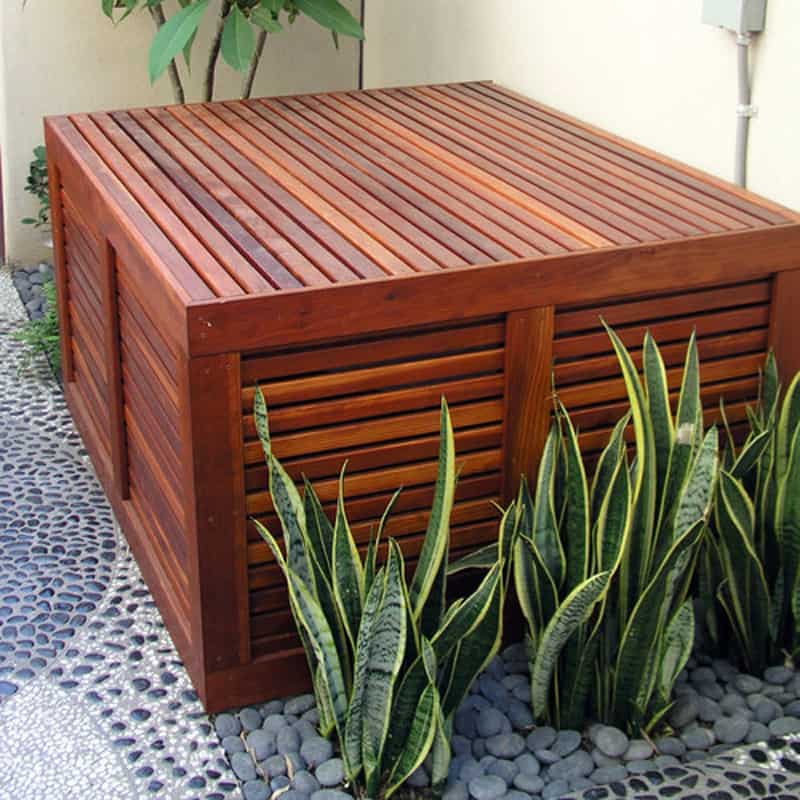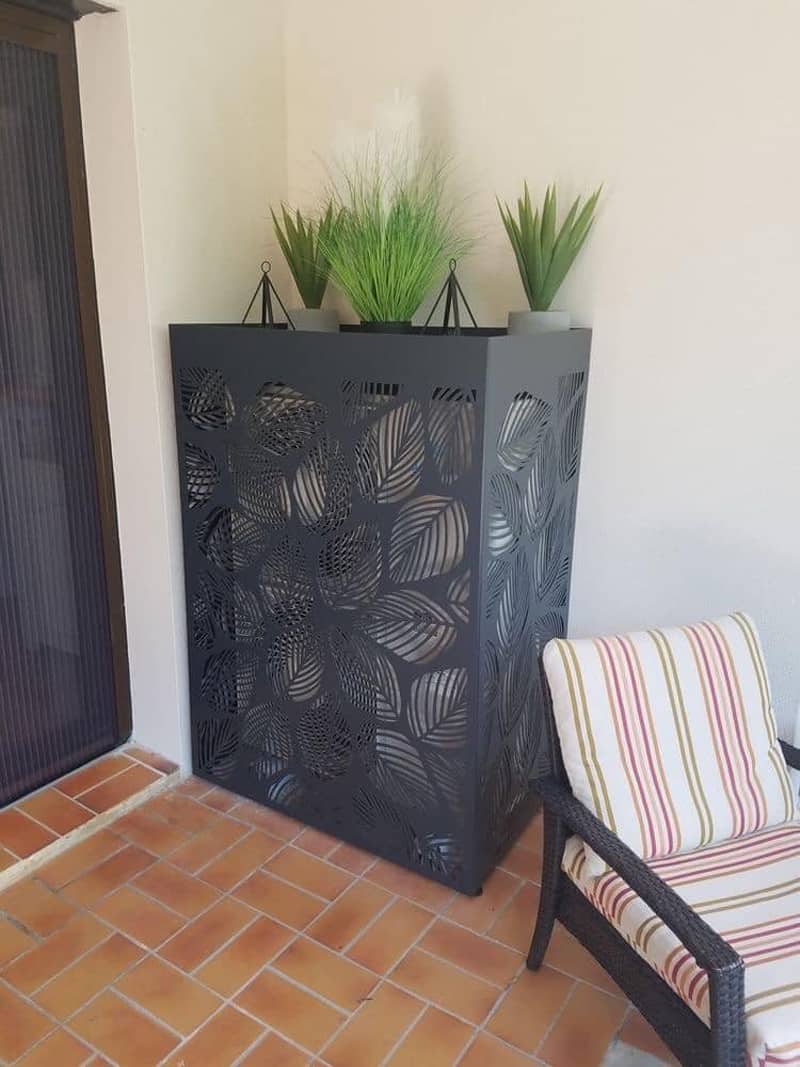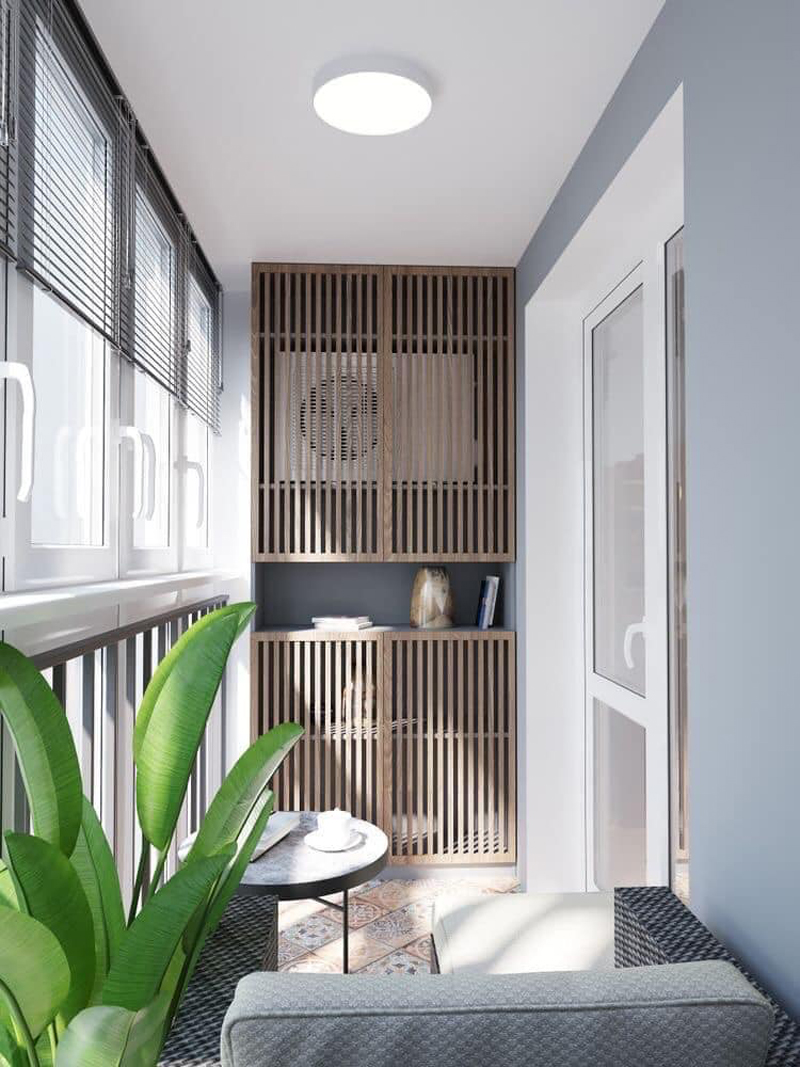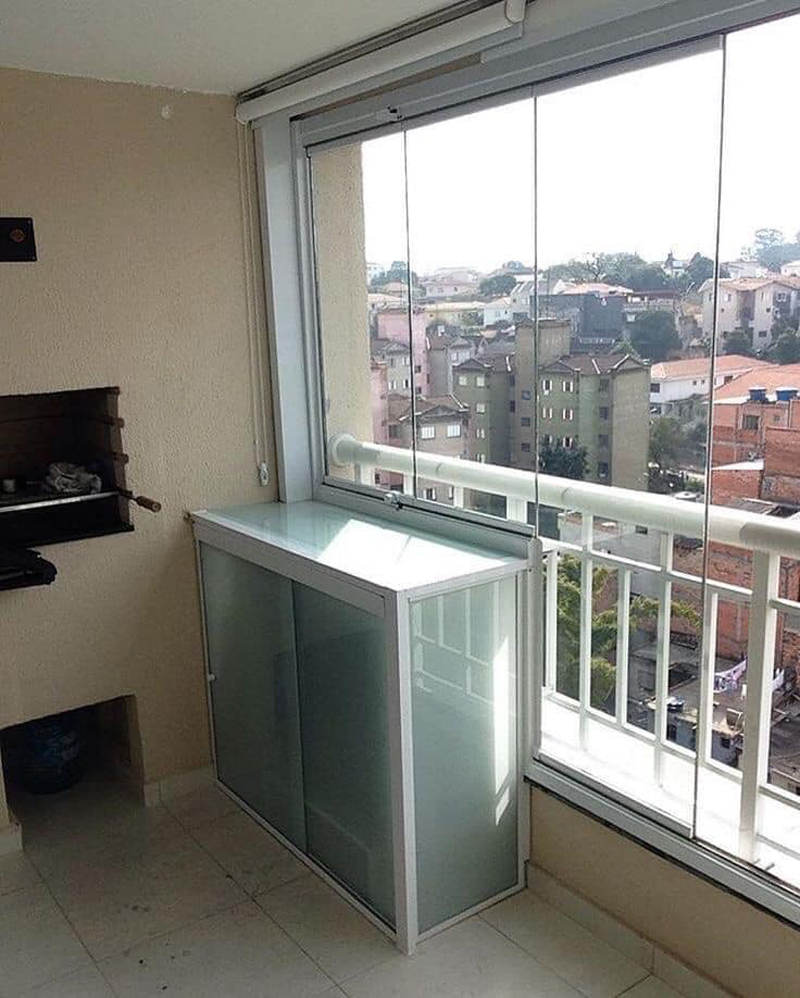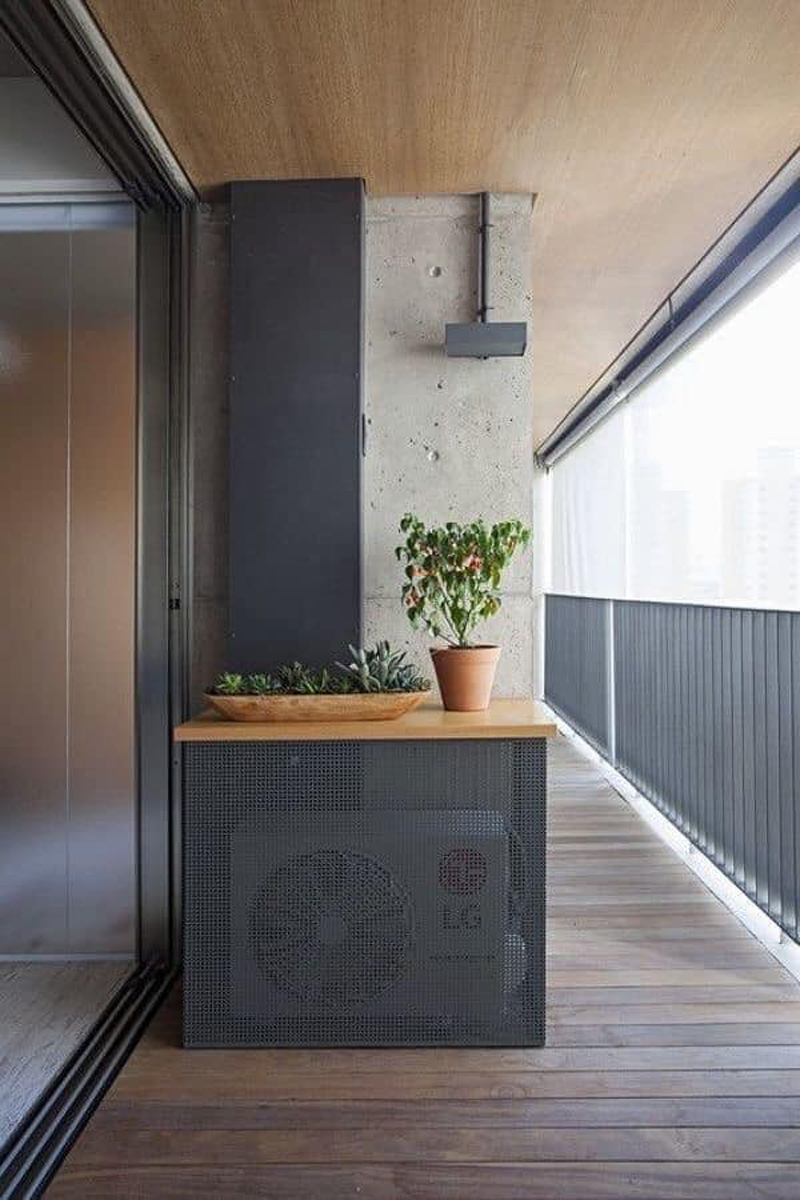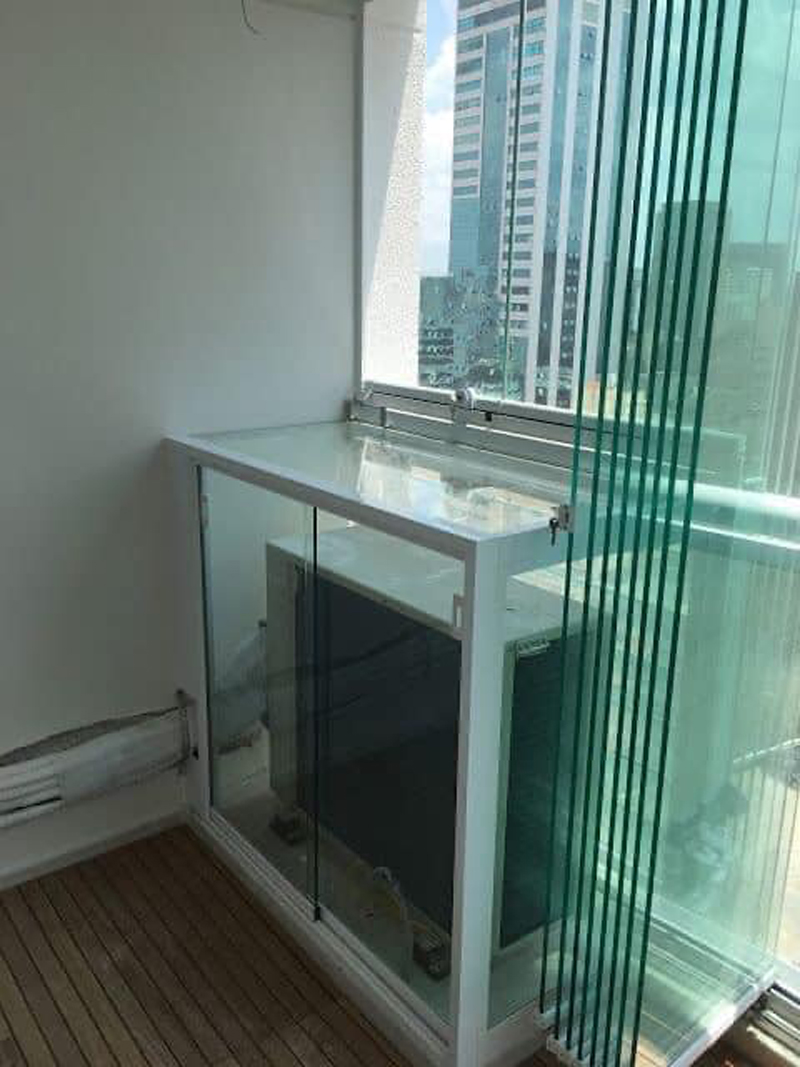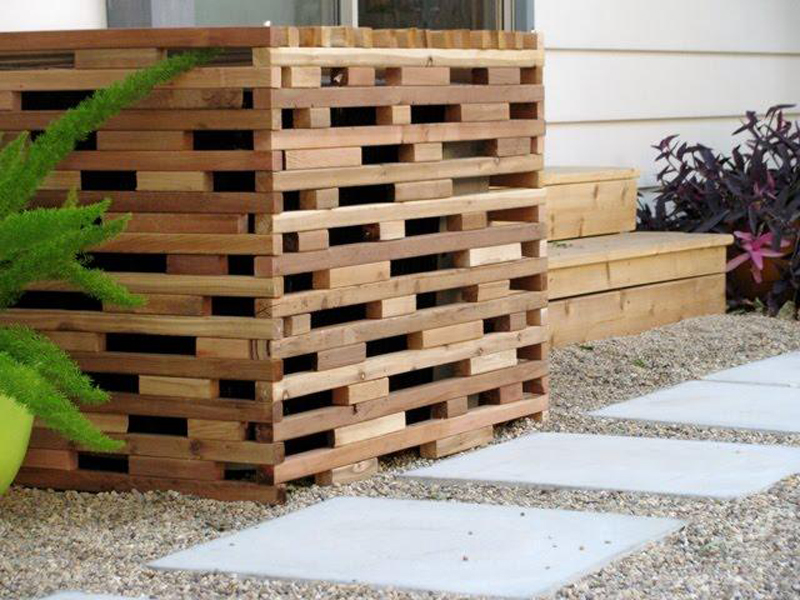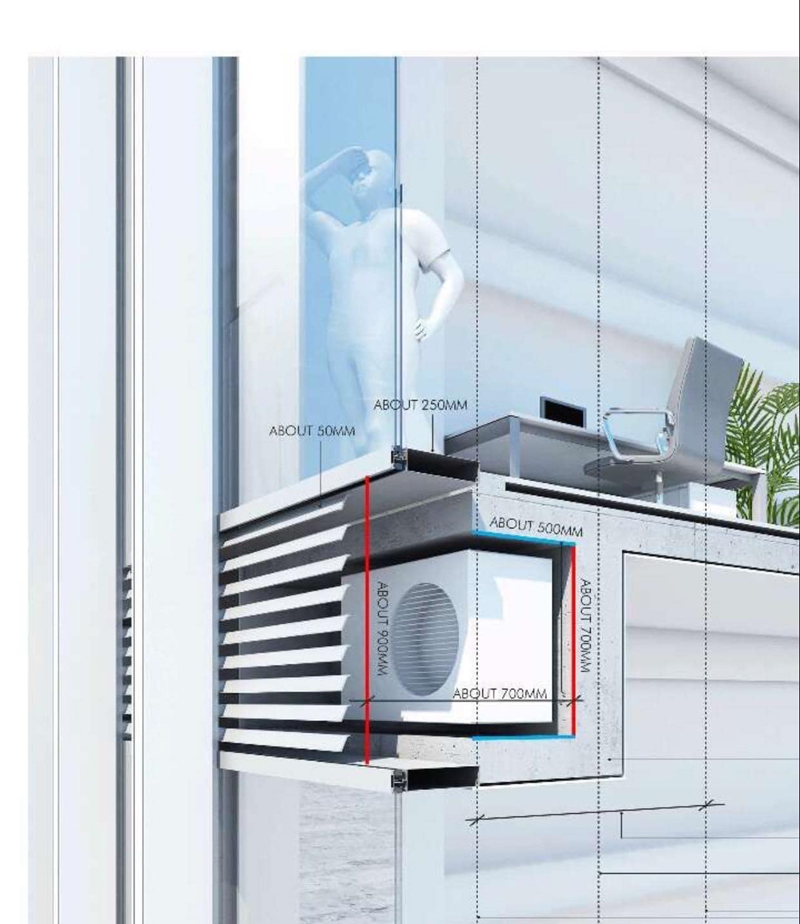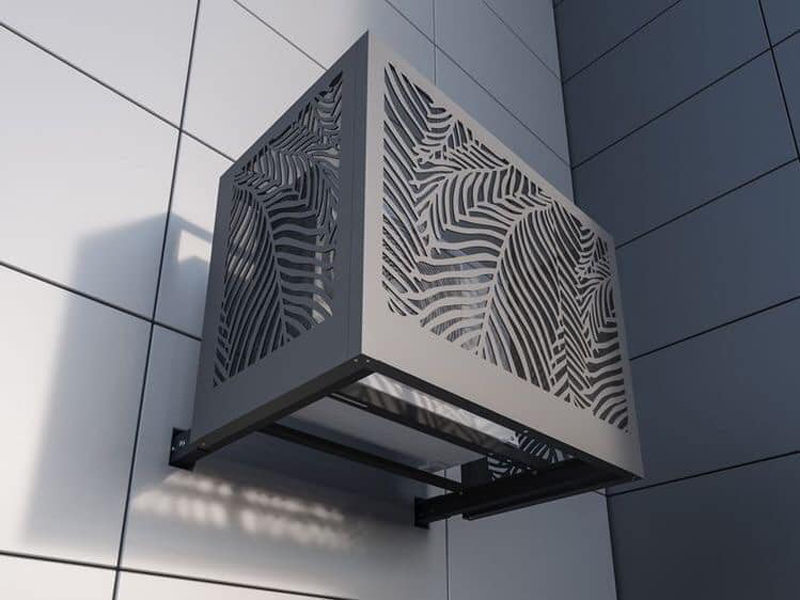Masking your air conditioner serves several purposes, ranging from aesthetic considerations to functional benefits. Here are some reasons why you might want to mask your air conditioner:
Aesthetic Appeal:
Air conditioner units are often bulky and utilitarian in design, which can be visually unappealing and disrupt the overall aesthetic of your outdoor space. Masking it can help create a more harmonious and visually pleasing environment.
Enhanced Outdoor Design:
If you’ve put effort into designing and landscaping your outdoor space, an exposed air conditioner can detract from the overall look you’re trying to achieve. Masking it allows you to maintain a consistent design and style.
Privacy and Distraction:
Masking the air conditioner can create a visual barrier that adds privacy to your outdoor area. It can also divert attention away from the mechanical equipment and direct it toward more attractive elements of your space.
Improved Curb Appeal:
When the air conditioner is visible from the street or sidewalk, masking it can contribute to the overall curb appeal of your home. A well-hidden unit can enhance the exterior appearance of your property.
Reduced Visual Clutter:
A masked air conditioner reduces visual clutter in your outdoor space. This can lead to a more relaxing and organized atmosphere.
Protection from Weather:
Depending on the masking method you choose, you can provide some level of protection to the air conditioner unit from elements such as direct sunlight, rain, and snow.
Temperature Regulation:
Certain masking methods, such as planting shrubs or bushes around the unit, can provide additional shading. This can help regulate the temperature around the air conditioner and potentially improve its efficiency.
Noise Reduction:
While not a primary reason for masking, some masking methods might contribute to noise reduction. For example, dense plants or barriers can absorb some of the sound emitted by the air conditioner.
Longevity and Maintenance:
By masking the air conditioner, you can reduce the amount of dust, debris, and leaves that accumulate on and around the unit. This can help maintain its performance and reduce the frequency of maintenance.
Compliance with Regulations:
In some areas, there might be homeowners’ association (HOA) rules or local regulations that require you to mask or hide certain outdoor equipment, including air conditioner units.
It’s important to note that while masking your air conditioner can provide numerous benefits, you should always ensure that the chosen method does not obstruct proper airflow and maintenance access. Poor ventilation or restricted airflow can lead to reduced efficiency, increased energy consumption, and potential damage to the unit. Always prioritize the functionality of the air conditioner while implementing masking solutions.
How To Mask Your Air Conditioner
Masking your air conditioner involves hiding or disguising the unit to make it less noticeable and blend in better with its surroundings. This can be particularly useful if the air conditioner’s appearance clashes with your outdoor aesthetics. Here’s how you can mask your air conditioner:
Fencing or Screens:
Install a decorative fence or screen around the air conditioner unit. This can be made of wood, metal, or any other material that complements your outdoor decor.
Leave enough space for proper airflow and maintenance. Ensure the fence or screen doesn’t obstruct the airflow to the unit.
Planting Shrubs or Bushes:
Plant shrubs, bushes, or tall plants around the air conditioner to create a natural screen. This not only hides the unit but also provides additional shade and cooling to the surrounding area.
Make sure the plants are placed at a reasonable distance from the unit to avoid obstructing airflow and maintenance.
Custom Enclosures:
Build a custom enclosure that matches your outdoor design. This can be a wooden box with louvered sides for ventilation or a structure that resembles a garden shed.
Ensure the enclosure has proper ventilation to prevent overheating of the air conditioner.
Lattice Panels:
Install lattice panels around the unit for a decorative way to mask it. You can train climbing plants to grow on the lattice, further enhancing the camouflage effect.
Decorative Coverings:
Use decorative covers specifically designed for air conditioner units. These can come in various designs and materials, such as faux rocks, decorative metal covers, or fabric wraps.
Make sure the covering doesn’t restrict airflow or interfere with the unit’s functionality.
Painting:
If your air conditioner unit is located against a wall, consider painting the wall in a color that matches the unit. This can help the unit blend in and become less noticeable.
Outdoor Art or Panels:
Install outdoor art pieces or decorative panels around the unit. These can serve as focal points and distract attention from the air conditioner.
Trellises and Vines:
Place a trellis near the air conditioner and let climbing vines grow on it. This adds a touch of greenery and helps conceal the unit.
Remember, when masking your air conditioner, it’s important to maintain proper airflow around the unit to ensure its efficiency and longevity. Regularly clean the area, trim plants, and clear any debris that might accumulate around the unit. Additionally, check local regulations or guidelines before implementing any changes to your air conditioner setup, as some places might have restrictions on how you can modify or cover outdoor units.

